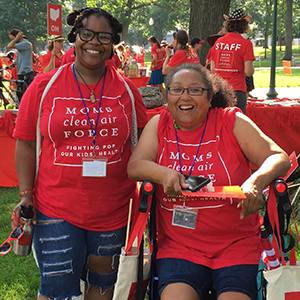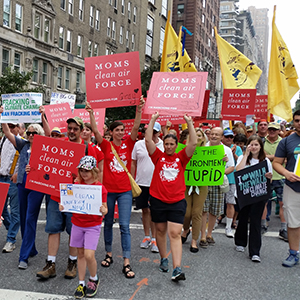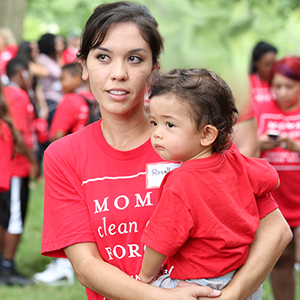
This article was jointly written by Stephanie Reese and Almeta E. Cooper. Léelo aquí en español.
During President Biden’s first week in office in January 2021, he issued Executive Order 14008, Tackling the Climate Crisis at Home and Abroad. It established that climate considerations are an essential element of U.S. foreign policy and national security. In addition, Section 223 of the executive order created the Justice40 Initiative, which set a goal that 40% of the overall benefits of an array of federal investments would flow to under-resourced communities that are overburdened by pollution.
Justice40 also strives to achieve a transition to a sustainable, clean energy future that is inclusive and equitable. It recognizes that those who have been most affected by environmental injustices should be the first to benefit from the nation’s efforts to combat climate change. It includes a broad array of federal investments: “climate change, clean energy and energy efficiency, clean transit, affordable and sustainable housing, training and workforce development, remediation and reduction of legacy pollution, and the development of critical clean water and wastewater infrastructure.”
The Biden administration implemented Justice40 with a whole of government approach, rolling out sweeping reforms to hundreds of its federal programs. Climate activists and environmental justice groups welcomed this approach as a harbinger of transformational change in combination with the funding and resources made possible by the Bipartisan Infrastructure Law (BIL) and the Inflation Reduction Act (IRA).
With the proposed Justice40 changes, the White House has required that the evaluation of the federal government’s progress in advancing environmental justice be measured by an Environmental Justice Scorecard. In addition, the White House issued guidance to assist federal agencies in the implementation of Justice40 along with the establishment of the Climate and Economic Justice Screening Tool (CEJST). This was designed to identify communities most in need of support, so that investments are targeted and impactful.
These measures and mandates are meant to provide transparency and accountability to the administration’s efforts to increase equitable outcomes, but are they effective? Is the Justice40 Initiative living up to the promises of the administration? Three years into the implementation of Justice40, we can take stock of the impacts of the initiative so far.
Several advancements are already observable. Initiatives under Justice40 have led to the electrification of Tribal government buildings, increased funding to mitigate the hazards of lead paint found in homes, and the initiation of new studies on flood prevention. However, it is no small task to address a systemic issue that has plagued the U.S. for over a century. The ambitious goal of providing 40% of federal climate and clean energy benefits to historically marginalized communities that have historically dealt with disenfranchisement from the government requires transparency to build trust and verify its impact.
The Justice40 Initiative faces challenges in fully realizing its aspirational goals to transform environmental justice and equity. While the initiative aims to enhance community engagement to allow the voices of those most affected by environmental injustices to be heard, many question whether there is adequate community input in the decision-making process. The administration must improve its efforts to strengthen communication and build trust within affected communities in order to better understand and develop the solutions that truly benefit the community.
In addition, as more of these programs roll out, there is the real concern of whether or not the funds meant to be distributed to disenfranchised communities will actually reach the communities. It is the local and state governments that will decide how the money they receive from the federal government is spent.
Another challenge is the lack of speed and efficiency in deploying funding to communities in need, such as Eastwick, Pennsylvania, a predominantly Black community that has been adversely impacted by repeated flooding due to extreme weather conditions for over 20 years. Concern that solutions may only address part of a problem, or cause bigger issues, as well as bureaucratic delays, are impeding the timely implementation of crucial projects that are needed to support communities like Eastwick.
Even with these challenges, the initial impact of Justice40 seems promising, but the true test will be in its long-term efficacy. Its successful outcomes must continue to be tracked and measured, and the impacts achieved from the distribution of these benefits must lead to sustainable long-term improvements in communities. Whatever additional methods are used to assess the success of this initiative, transparency and accountability need to be key components. Under-resourced communities have waited far too long for meaningful change for the potential shortcomings of policy frameworks to impede its progress.
TELL PRESIDENT BIDEN & EPA: MOVE QUICKLY TO FINALIZE STRONG POLLUTION PROTECTIONS




